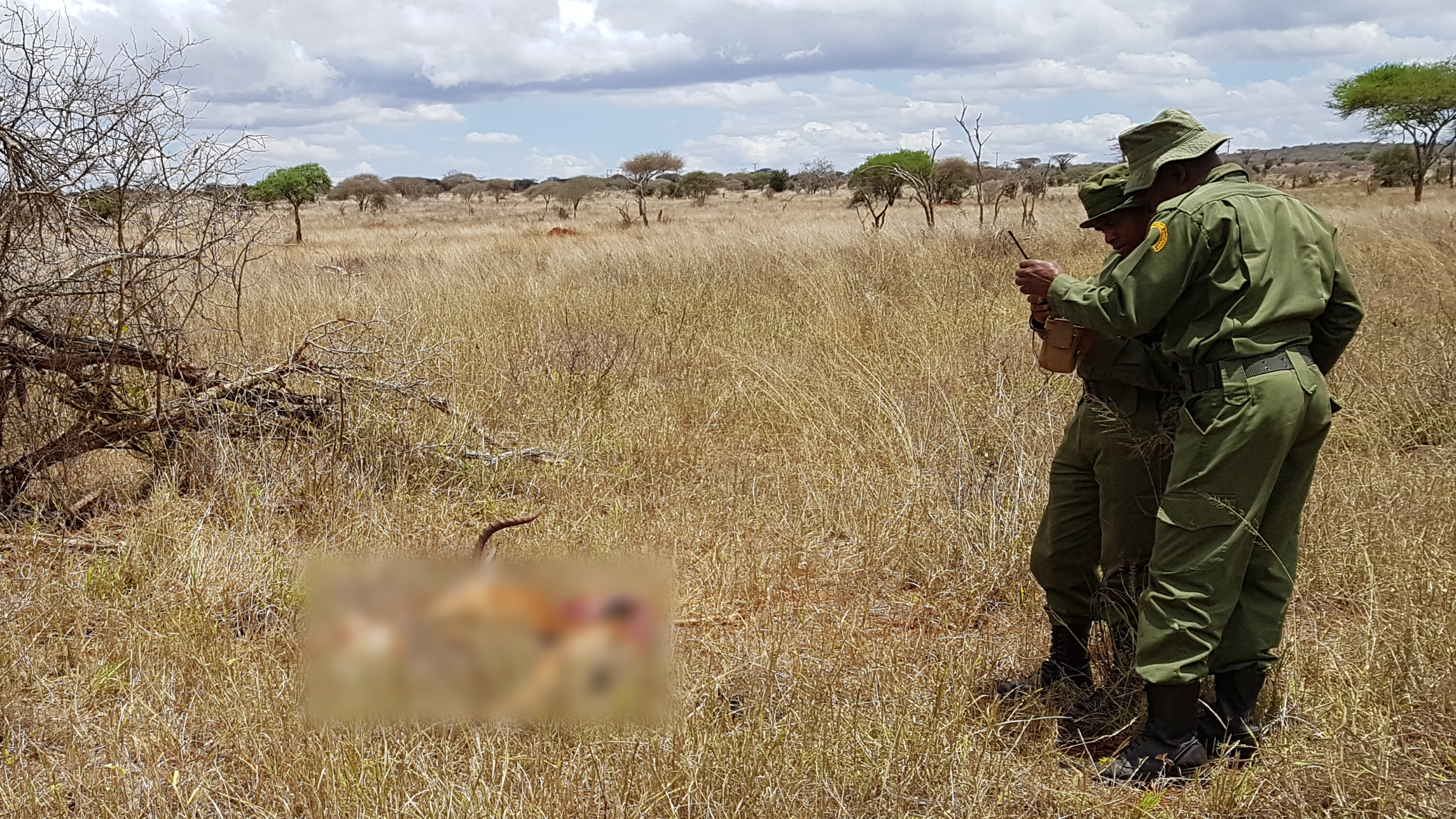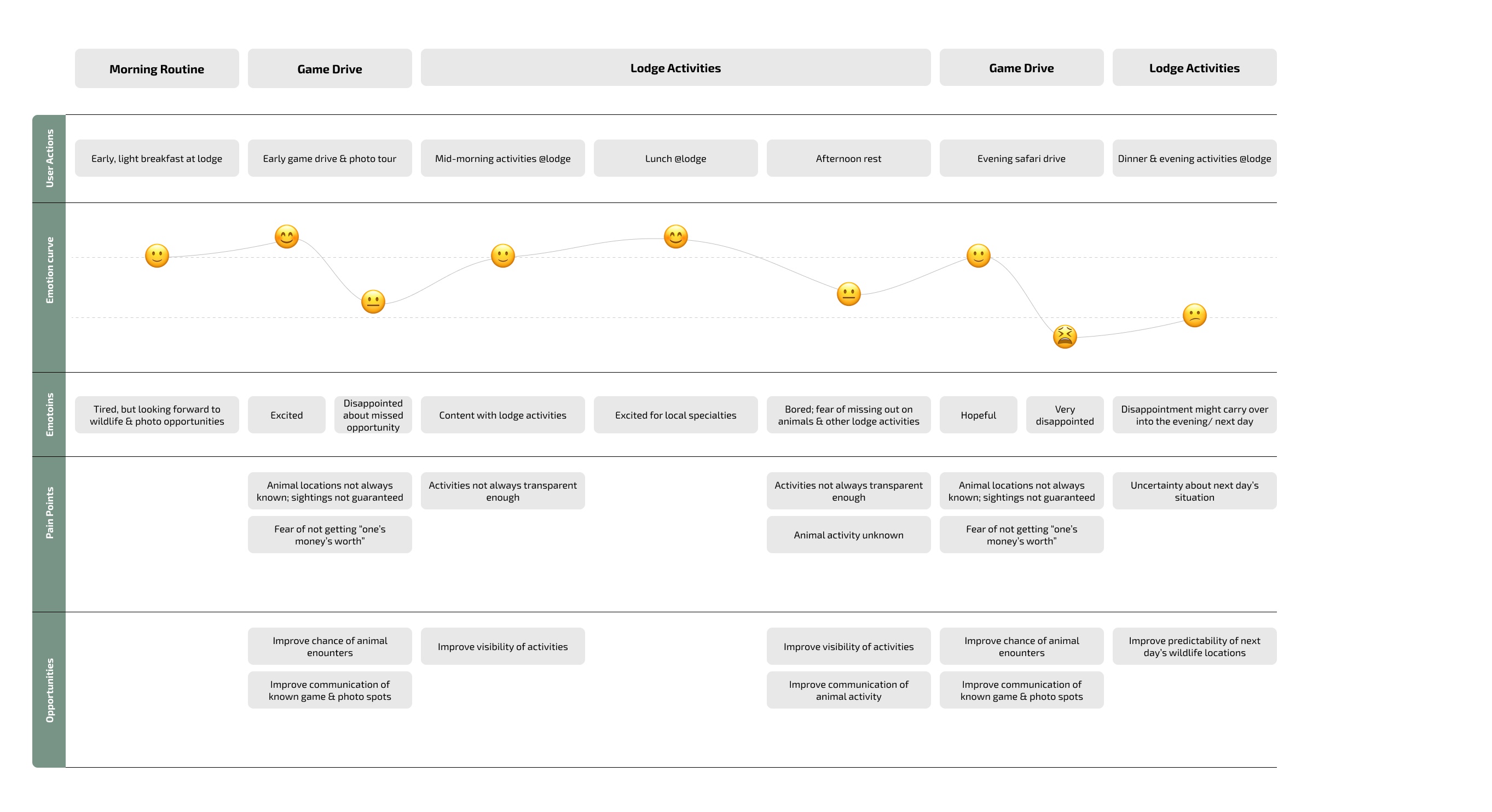When?
11.2019 - 04.2020
What?
Volunteer Project
Who?
Solo Work
Overview
In 2019, I volunteered at “LUMO Community Wildlife Sanctuary”, a wildlife conservancy in Kenya, working closely with rangers and park management. During this time, I was tasked with assessing and improving the software used by rangers for logging wildlife encounters, arcass sightings, and other significant events during their patrols. This case study documents my process, from identifying pain points to brainstorming and designing a solution aimed at improving ranger efficiency and business value by prominently enhancing the park’s visitor experience.
Problem Statements
1. For Rangers:
- Inefficient UX: The mobile application used by rangers was tedious and time-consuming, with a confusing navigation structure and too many categories.
- Safety Concerns: Staying in one place for too long while using the app increased the risk of encountering dangerous wildlife or being exposed to harsh environmental conditions.
- Motivation: Rangers wanted to complete their tasks quickly to reduce risks and have more time for breaks.

2. For Park Management:
- Underutilized Data: Although the rangers logged extensive data during their patrols, it was only collected to fulfill government requirements. The park management did not actively use this data to benefit conservation efforts or improve the park’s appeal by improving the visitor experience.
Business Impact
- Expected value by park management initially had only limited business implications: the goals was to increase ranger efficiency and satisfaction.
- Through exploration, the expected business impact grew and included increasing visitor numbers and park revenue.
Procedure
Exploration Research
1. Field Study with Park Rangers: I shadowed 8 rangers during their patrols to understand their workflows, challenges, and interactions with the app.
Key findings:
- App navigation was cumbersome, requiring too many taps to log a single event.
- Categories were overly detailed, making it hard to find relevant options quickly.
- The app was overall unappealing, which added to fatigue of the rangers.
2. Stakeholder Interviews with Management: I conducted interviews with park management to understand their goals and expectations for the data.
Key findings:
- Management wanted to use the data for the park’s benefit, but they lacked the tools and know-how to achieve this in a feasible and viable way.
3. Visitor Insights: Through informal conversations with visitors, I gained insights into the needs and expectations of visiting wildlife enthusiasts and families.
Key findings:
- Word-of-mouth reportings of wildlife sightings were not always reliable, often leading to disappointed visitors, having missed one or several of the Big Five.
- Spontaneous animal sightings were often communicated to all lodges at once, which lead to many cars going out and crowding in one place when a rare animal had been sighted, scaring the animal away.

User Journey Maps
I mapped the rangers’ and visitors’ journeys and worked from there to identify pain points and opportunities for improvement.




Iterative Work
- Quick iterations on possible solutions were done in the sanctuary and tested with the rangers and visitors respectively.
- Iterations with rangers helped to prioritize frequently logged events and simplify input to meet their expectations.
- Iterations with visitors converged on the idea to use the collected GPS data to show animal locations in the lodges on interactive maps, with family-friendly design and navigation.
Success Metrics
The following metrics were discussed to measure the project's impact.
Lagging Metrics:
- Weekly visitors.
- Monthly park revenue.
Leading Metrics:
- Ranger & visitor satisfaction scores.
- Online customer reviews.
- Ranger time-on-task for logging events.
- Average successful game drives/ average tracked down animals per day.
Results
Discovered Solution
1. UX overhaul of the Mobile Tracking Application:
- Simplified Navigation: Reduced categories to essential options, grouped logically for quick access.
- Quick Logging: Introduced one-tap logging for common events.
- Wifi Data Upload: Included automatic background data upload when at camp, eliminating the necessity for a more time-consuming USB connection.
2. Interactive Web-Based Visitor Map:
- Real-Time Data Visualization: Displayed ranger-logged data, scenic spots, and more as icons on a map, color-coded by event type.
- Visitor Engagement: Designed an interactive experience for lodge guests, allowing them to explore animal sightings by time and location, with room for additional data about animal types, nature and the park’s pledge to wildlife protection.
- Management Dashboard: Simplified backend for park management to filter data, analyze trends, and plan patrols (future scope).
Impact on Business and Wildlife
- Interactive maps raising visitor engagement and competitiveness amongst other wildlife parks.
- Improved tracking app UX increasing ranger efficiency, safety, and satisfaction.
- Better transparency on wildlife locations increasing the options for game drives, and removing the likelihood of singular crowded spots, which reduces human impact on animals.
Reflection
The next steps to finalize this project were planned as follows:
- Validate the POC inside Lumo Sanctuary with rangers and visitors and and converge on MVP.
- Implement and roll out the app on the rangers’ devices and the interactive map across the lodges.
- Measure impact along the defined metrics.
Unfortunately, the project was cancelled during early implementation phase due to the Covid outbreak. Nevertheless, it was a rewarding experience that combined UX design with conservation efforts. It demonstrated how technology and design can address real-world challenges while creating meaningful impacts for both users and the environment.
